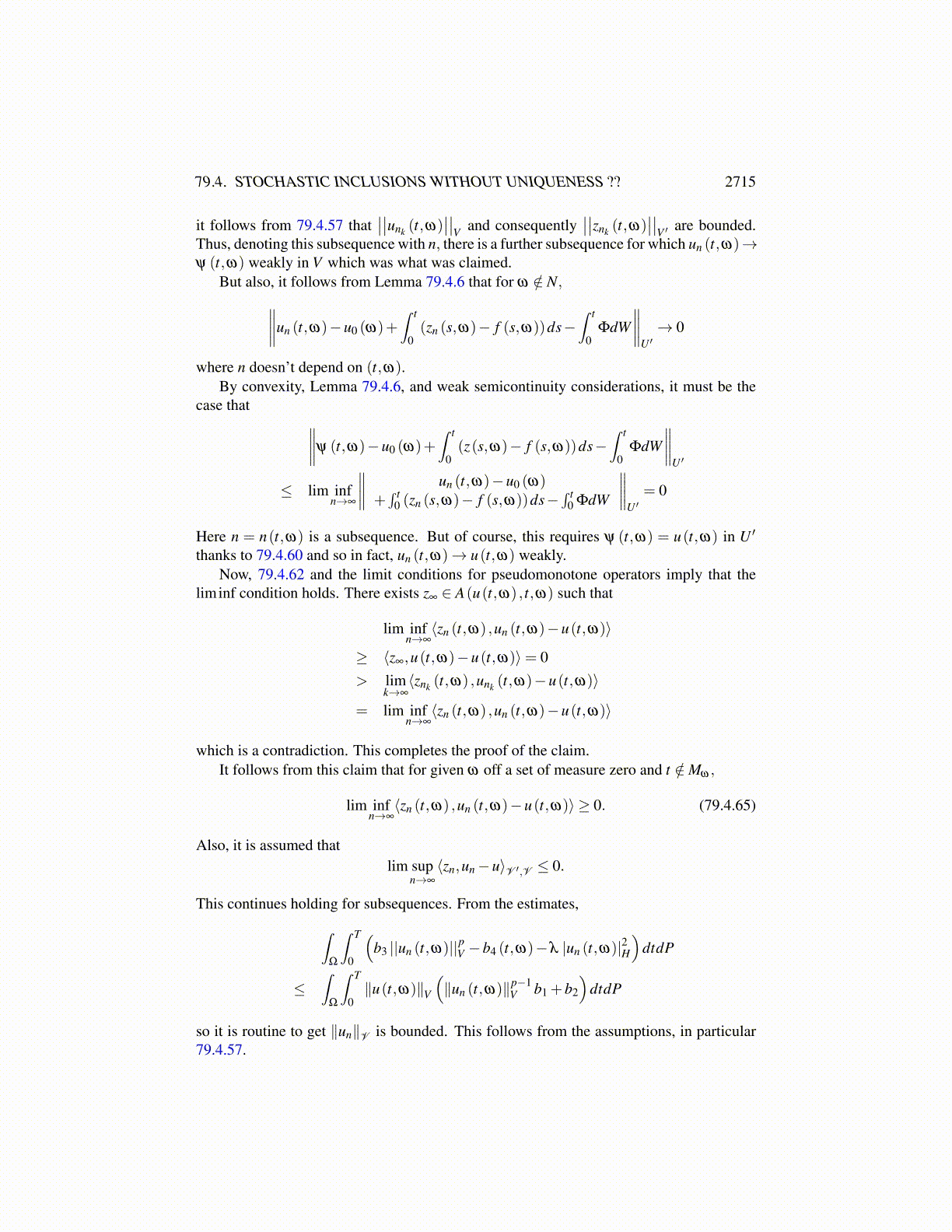
79.4. STOCHASTIC INCLUSIONS WITHOUT UNIQUENESS ?? 2715
and solim sup
n→∞
⟨zn,un⟩V ′,V ≤ ⟨z,u⟩V ′,V
Now it follows that
lim supn→∞
⟨zn,un−u⟩V ′,V ≤ ⟨z,u⟩V ′,V −⟨z,u⟩V ′,V = 0 (79.4.56)
Thus in the situation of 79.4.44, we get 79.4.56. We state this as the following lemma.
Lemma 79.4.8 Suppose un,zn are progressively measurable, zn ∈ Â(un) , and
un (t)−u0 +1n
∫ t
0Funds+
∫ t
0znds =
∫ t
0f ds+
∫ t
0ΦdW
Then there is a subsequence, still denoted with n such that 79.4.56 holds.
Now the following is the main limit lemma which is a statement about this subsequencesatisfying 79.4.56. This lemma gives a useable limit condition for the Nemytskii operators.
Lemma 79.4.9 Suppose conditions 1 - 79.4.2 hold. Also, suppose U is a separable Banachspace dense in V, a reflexive separable Banach space and V is dense in a Hilbert space Hidentified with its dual space. Thus
U ⊆V ⊆ H = H ′ ⊆V ′ ⊆U ′,
Hypotheses: For f ∈ V ′
un (t)−u0 +1n
∫ t
0Funds+
∫ t
0znds =
∫ t
0f ds+
∫ t
0ΦdW in U ′ (**)
un and zn are P measurable
un→ u weakly in V , zn→ z weakly in U ′
lim supn→∞
⟨zn,un−u⟩V ′,V ≤ 0, (*)
Note that from the above discussion, * follows ** from taking a suitable subsequence.Assume also that for some set of measure zero N, if ω /∈ N,
supt∈[0,T ]
λ |un (t,ω)|2H ≤C (ω) , C (·) ∈ L1 (Ω) (79.4.57)
(Since we are assuming that λ = 0 in 3, this condition is automatic, but if you did have79.4.57 for λ > 0, then the following argument will show how to use it.)
Conclusion: If the above conditions hold, then there exists a further subsequence, stilldenoted with n such that for any v ∈ V , there exists z(v) ∈ Â(u) with
lim infn→∞⟨zn,un− v⟩V ′,V ≥ ⟨z(v) ,u− v⟩V ′,V .
Also z ∈ Â(u) and u,z are progressively measurable and
u(t)−u0 +∫ t
0zds =
∫ t
0f ds+
∫ t
0ΦdW in V ′
for all ω off a set of measure zero.